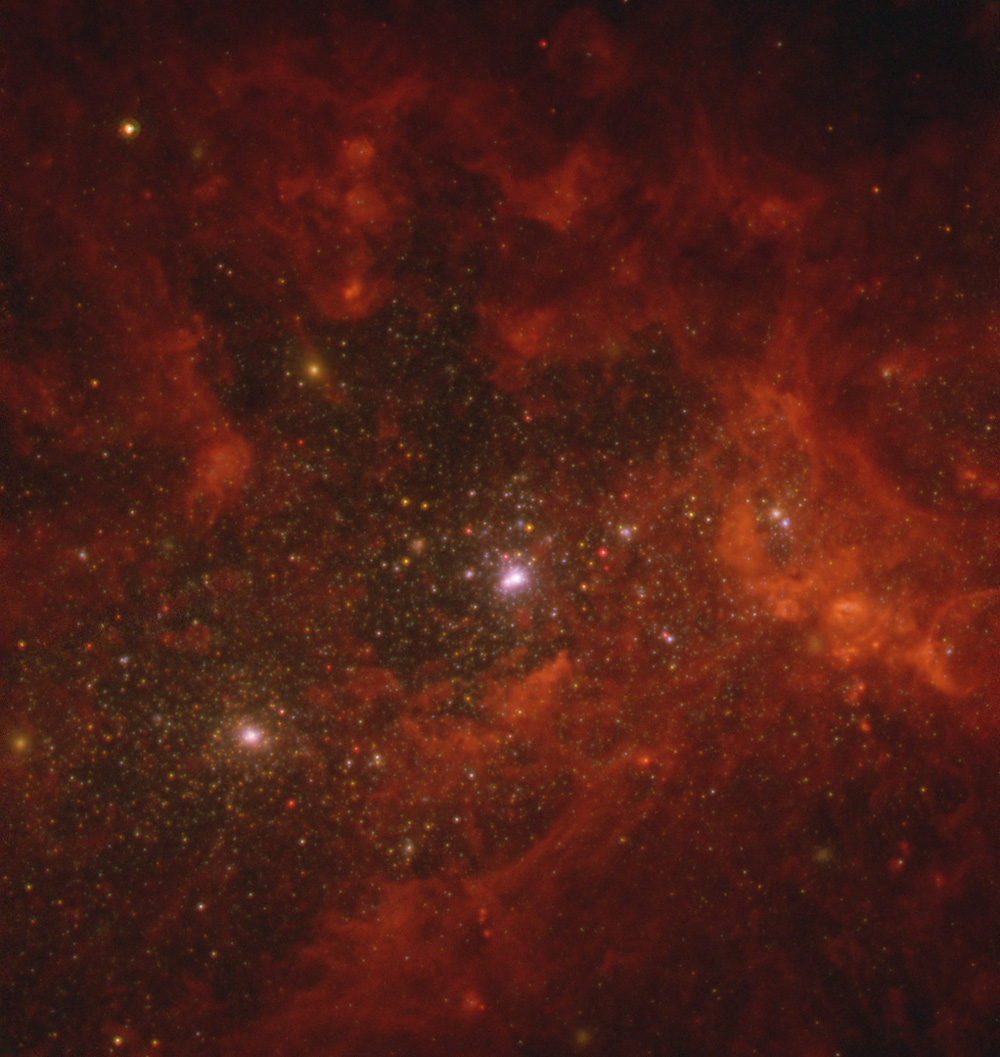
Super Clusters in NGC 1569 (2015)
A recent thread at Asterisk (this is APOD’s discussion forum) got me looking at this beautiful object and the data in Hubble’s archive. I noticed there was a very intimate look at the center of this starburst galaxy featuring many bright, young stars comprising super star clusters and decided to process it, making sure not to over brighten the star clusters so that as many details would remain preserved as possible.
In the center is Cluster A, which is actually two clusters which are called A1 and A2. At lower left, the next brightest cluster is called Cluster B. To the upper right is Cluster C, which is somewhat enshrouded in nebula.
Other star clusters are also visible as dimmer, soft yellow blobs which almost look like elliptical galaxies because it’s very hard to make out any individual members. I’m not sure what kind of star clusters those are. To me they look a lot like small globular clusters. One may be tempted to conclude that we are seeing the life cycle of globular clusters in some kind of holy grail moment, but something tells me that if that were the case it would have made headlines somewhere. Our knowledge about the formation of globular clusters is murky at best. Does NGC 1569 offer any insights?
This image is possible thanks to the following HST proposal:
Starburst Galaxies and Their Population of Super Star Clusters
Red: HST_10885_06_ACS_WFC_F658N_sci
Green: HST_9300_02_ACS_HRC_F555W_sci
Blue: HST_9300_02_ACS_HRC_F330W_sci
North is NOT up. It is 18.4° clockwise from up.
Copyright information:
Hubble data is public domain, but I put a lot of work into combining it into beautiful color images. The minimal credit line should read: NASA / ESA / J. Schmidt

This work is licensed under a Creative Commons Attribution 3.0 Unported License.


